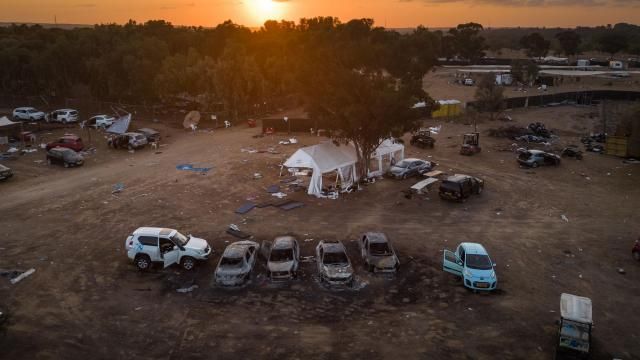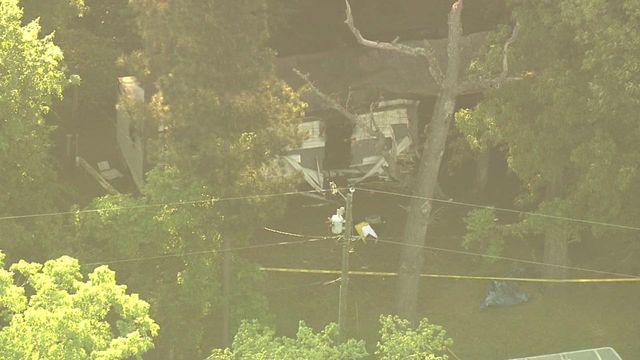U.N. Team Finds Grounds to Support Reports of Sexual Violence in Hamas Attack

JERUSALEM — A United Nations report released Monday found signs that sexual violence was committed in multiple locations during the Hamas-led Oct. 7 attack on Israel and said that some hostages being held in the Gaza Strip had also been subjected to rape and sexual torture.
From late January to early February, the United Nations deployed a team of experts to Israel and the West Bank led by Pramila Patten, the secretary-general’s special representative on sexual violence in conflict.
In their report, the experts said they had found “reasonable grounds” to believe that sexual violence occurred during the Hamas-led incursion into Israel, including rape and gang rape in at least three locations: the Nova music festival site and the area around it, as well as Road 232 and Kibbutz Re’im.
“In most of these incidents, victims first subjected to rape were then killed, and at least two incidents relate to the rape of women’s corpses,” the report said.
The U.N. report, which also cited allegations that Palestinians detained by Israel have also been sexually abused, was issued three months after The New York Times published an extensive report on sexual violence during the Hamas-led attack, including several incidents along Road 232. Hamas leaders denied the accusations, and the U.N. report, noting the array of fighters who took part in the Oct. 7 attack, said its experts could not determine who was responsible for the sexual assaults.
In their report, the U.N. experts cited indications of sexual violence that had not previously been widely reported, including the rape of a woman outside a bomb shelter at the entrance of Kibbutz Re’im. That incident was corroborated by witness testimony and digital material, the report said.
The experts said they had also found “a pattern of victims, mostly women, found fully or partially naked, bound, and shot across multiple locations.” Although the evidence was circumstantial, they said, the pattern could indicate some form of sexual violence and torture.
When it came to the hostages seized in Israel and taken to Gaza, the report offered a more conclusive finding.
It said it had found “clear and convincing information” based on firsthand accounts of released hostages that sexual violence, including rape, sexualized torture, and cruel, inhumane and degrading treatment, was inflicted against some women and children during their time in captivity. It also said there were reasonable grounds to believe that such abuse was taking place against the hostages still being held.
Israel welcomed the report for recognizing “that the crimes were committed simultaneously in different locations and point to a pattern of rape, torture and sexual abuse,” a spokesperson for the Foreign Affairs Ministry said.
The U.N. report said its experts could not verify the reports of sexual violence in Kibbutz Kfar Aza or Kibbutz Be’eri. But in both places, it said, circumstantial information — “notably the recurring pattern of female victims found undressed, bound, and shot,” in Kfar Aza, for example — indicated that sexual violence, including “potential sexualized torture,” may have occurred.
It said that two specific allegations of sexual violence in Kibbutz Be’eri that were widely repeated by the media, however, were “unfounded.”
First responders told the Times they had found bodies of women with signs of sexual assault at those two kibbutzim, but the Times, in its report, did not refer to the specific allegations that the U.N. said were unfounded.
The U.N. report detailed the daunting challenges to determining what happened on the day of the attack.
To begin with, it was nearly impossible to gain access to the sort of forensic evidence often used to establish sexual assault. In part, this was because of the large number of casualties and the widely dispersed attack sites.
The report also said first responders — often untrained volunteers — focused more on search and rescue operations and the recovery of the dead than on gathering evidence. And many of the bodies were badly burned, compromising any evidence.
The experts said they had put out calls to women in Israel who survived assaults on Oct. 7 to come forward, but had not talked to any directly. A small number of survivors, they said, were reported to still be in treatment for trauma.
They also noted a deep reservoir of suspicion among Israelis toward international organizations such as the U.N., as well as the fact that the team was on the ground for a limited period of two and a half weeks.
“Overall, the mission team is of the view that the true prevalence of sexual violence during the 7 October attacks and their aftermath may take months or years to emerge and may never be fully known,” said the report.
The report said that the U.N. team had also heard accounts of sexual violence against Palestinians that implicated Israeli security forces and settlers.
Palestinian officials and civil society representatives, it said, told the U.N. team of “cruel, inhuman and degrading treatment of Palestinians in detention, including various forms of sexual violence in the form of invasive body searches, threats of rape, and prolonged forced nudity, as well as sexual harassment and threats of rape, during house raids and at checkpoints.”
The U.N. team asked the government of Israel to give access to other U.N. bodies, including the Office of the High Commissioner for Human Rights and the Independent International Commission of Inquiry on the occupied Palestinian Territory, so they can conduct thorough independent investigations into these allegations.
The Foreign Ministry spokesperson, Lior Haiat, said, “Israel rejects the report’s call to investigate Palestinian claims regarding ‘sexual violence by Israeli elements.’”
Patten had said that her trip was not intended to be investigative — other U.N. agencies have that mandate, she said — but to “give voices” to victims and survivors and find ways to offer them support, including justice and accountability.
The U.N. team included technical experts who could interpret forensic evidence, analyze open-source digital information and conduct interviews with victims and witnesses of sexual violence, the report said.
Patten said one challenge the U.N. experts had faced was sifting through the paucity of reliable information, and inaccurate accounts from untrained people.
“On one hand,” she said, “we have the fog of war that often silences grounds of sexual violence. But we have also seen in the history of war instances where sexual violence can be weaponized.”
This article originally appeared in The New York Times.









